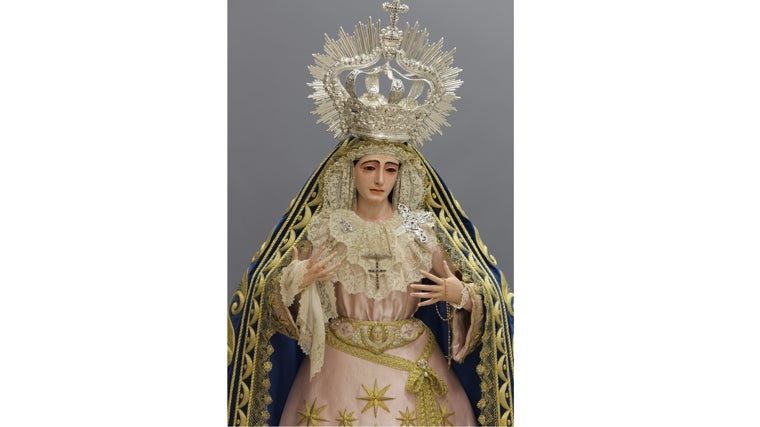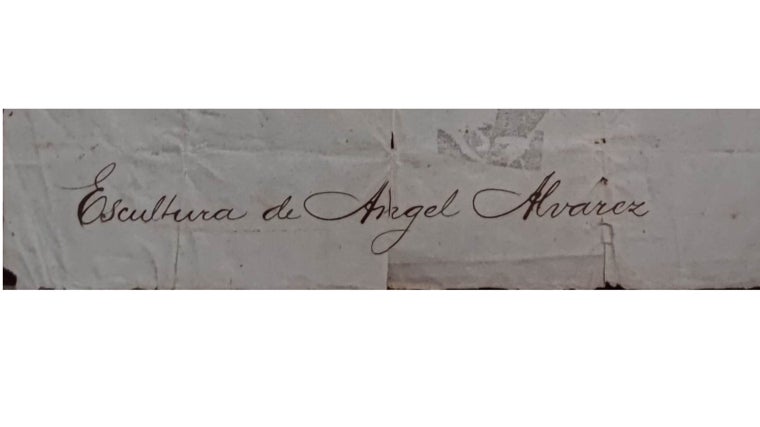The Sorrowful of Mahón that belonged to the ancient mystery of Calvary

The brotherhood of Calvarythanks to the meticulous work of recovering and cataloging its photographic archive, which can now be consulted in detail on the corporation’s official website, has achieved an important discovery in the history of its artistic heritage. This work, carried out by Darío Ojeda and Alejandro Román, has allowed discover that one of the images of the Marys that appeared in the mystery passage that was in procession during Holy Week in Seville is in the brotherhood of the Sentence and Misericordia of Mahón, in Menorca. As it has been determined, this image was acquired a few years ago by a Sevillian antique dealer.

Mystery of Calvary
Hardly any information has been published about the two ancient images of the Marys of Calvary, considered to be of low artistic quality, as is the carving of Mary Magdalene. The latter was sold in 1898 to the Esperanza brotherhood of Huelva, where it still continues in procession. Inside, a document was found that attributes its authorship to Ángel Álvarez. As for the two Marías, thanks to the research of Ignacio Camacho, It is known that one of them was transferred in 1912 to the brotherhood of Santa Cruz for a period of three years.
In relation to the findings from the archive of the Calvario brotherhood on the whereabouts of one of its former Marías, it is worth noting that In 2021 the image was intervened by Darío Ojeda. During this process, in addition to the restoration, technical and historical-artistic studies were carried out that provided important new information about its workmanship and history. Thanks to radiological analyzes and the characterization of the materials, It has been confirmed that the sculpture is prior to the execution date believed until now.
Calvaryin the stage of reorganization, when he resided in the parish of San Ildefonso, premiered a mystery step with the crucified Francisco de Ocampo, the Virgin of the Presentation of Juan de Astorga, like Saint John, and the three Marys.

The Virgin of Mercy, former Mary of Calvary
Image
The article published by the brotherhood indicates that “the image presents metallic elements prior to the Industrial Revolution, and in the two superimposed polychromes that it preserves, lead white or white lead was found as a pigment, which was used regularly until the 19th century. at which time, due to its high toxicity, other pigments such as zinc white, among others, would begin to be used. The work is structurally made of cedar wood“, noble material within sculpture workshops for costed images and areas of special significance in the carvings such as the face and hands,” they point out.
It is estimated that this image could date from before the 19th century, since, according to the brotherhood, “glassy eyes would be added to him to become a secondary figure in the mystery from 1888 onwards.” This data is supported by the analysis of an intervention after the execution of the last polychrome, during which the face of the image was mechanically sectioned to separate the mask and place the glass eyes. This observation allows us to confirm that the original image did not have these false elements.
After this investigation it is known that This image dates back to the 17th and 18th centuries.being remodeled for its departure with the Calvario brotherhood at the end of the 19th century, in which Ángel Álvarez, who worked for the corporation, was a part.

Payment document
On the other hand, the payment document does not ensure that the holy women were from Ángel Álvarez, and can only be attributed to María Magdalena through the writing found from the 19th century. «Said artist is paid 840 reales on September 7, 1888 for «the work of sculptures for said brotherhood», which can range from a new execution to a remodeling of a previous image. To this receipt we can add another suggestive piece of information that appeared in that same account book in a few previous months, specifically on December 10, 1887. In the concepts there appears an expense of 4 reales to “take the effigies to the sculptor” and later an expense of 80 reales for “a sculpture.” Therefore, and taking into account how little we can find out and expand on it, it is likely that some ancient sculpture was acquired, for a very cheap price, and taken to the sculptor for remodeling and restoration.





